
Studien zweier Reiter. Albrecht Durer Albrecht Dürer, Albrecht Durer Paintings, Oil Pastels
Albrecht Dürer (born May 21, 1471, Imperial Free City of Nürnberg [Germany]—died April 6, 1528, Nürnberg) painter and printmaker generally regarded as the greatest German Renaissance artist. His vast body of work includes altarpieces and religious works, numerous portraits and self-portraits, and copper engravings. His woodcuts, such as the Apocalypse series (1498), retain a more Gothic.
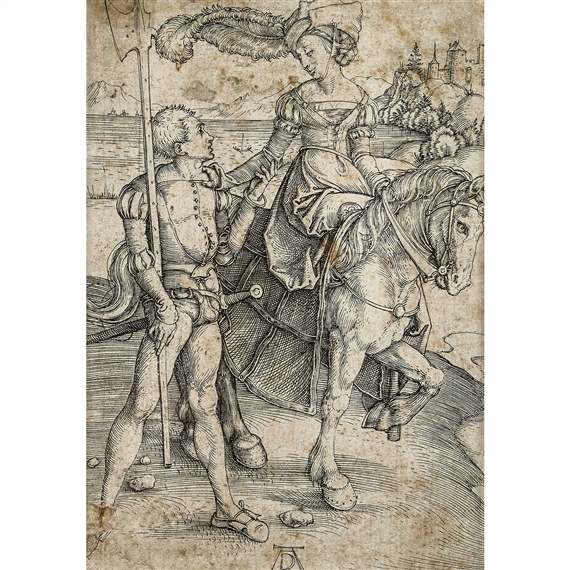
Dürer Albrecht Das Fräulein zu Pferd und der Landsknecht. MutualArt
Albrecht Dürer (German, Nuremberg 1471-1528 Nuremberg) 1603-4. Di Alberto Durero Pittore, e Geometra. . .della Simmetria dei Corpi Humani, Libri Quattro Nuouamente Tradotti dalla Lingua Latina nella Italiana. Albrecht Dürer (German, Nuremberg 1471-1528 Nuremberg) 1591.

Pferd von Albrecht Dürer Kunstdruck > Bildergipfel.de
Dürers Idee vom "idealen Pferd" Mit forschendem Blick habe Albrecht Dürer (1471-1528) Pferde genauestens beobachtet. Im Hinblick auf ein geplantes "Lehrbuch der Malerei", für das er.

Artist Dürer, Albrecht, Title Der große Triumphwagen, Detail Junger Reiter als Kranzträger
Albrecht Dürer's woodcut, Four Horsemen of the Apocalypse, always reminds me of my lifelong love of Hollywood cowboy movies. American westerns are almost all predicated on Christian themes, and riddled with simple symbolic numbers. Maybe you are familiar with the 1960 WesternThe Magnificent Seven and their connection to the Seven Virtues? And in terms of the Seven Vices, in the 2007 remake.

Sold Price DÜRER, ALBRECHT "Der Heilige zu Pferd". November 4, 0121 900 AM CET
Albrecht Dürer (/ ˈ dj ʊər ər /; German: [ˈʔalbʁɛçt ˈdyːʁɐ]; 21 May 1471 - 6 April 1528), sometimes spelled in English as Durer, was a German painter, printmaker, and theorist of the German Renaissance.Born in Nuremberg, Dürer established his reputation and influence across Europe in his twenties due to his high-quality woodcut prints.He was in contact with the major Italian.
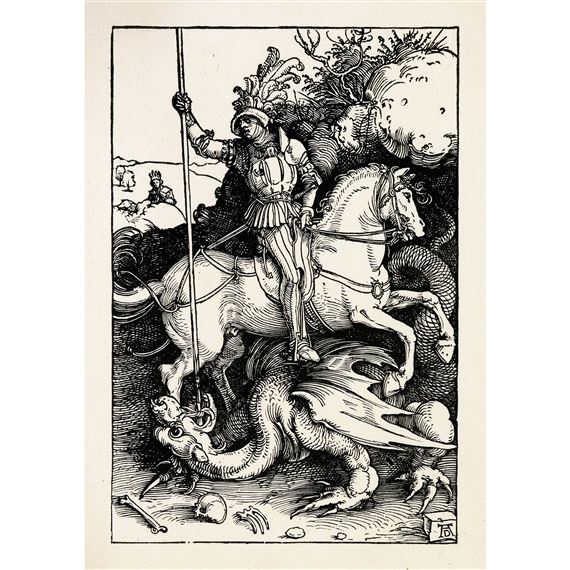
Albrecht Dürer Der heilige zu Pferd (1504 1505) MutualArt
Kleines Pferd ist ein gravierter Druck, der vom deutschen Künstler Albrecht Dürer geschaffen wurde. Das Stück entstand 1505 und gilt als wesentlicher Teil der deutschen Renaissancebewegung. Albrecht Dürer zeichnete das Pferd im Druck und zeigt sein Profil als Ganzes, während es neben einem Tonnengewölbe steht, das seine genauen Maße und.
Gemälde Reproduktionen Pferd Tod und der teufel , 1513 von Albrecht Durer (14711528, Italy
Foto von Albrecht Dürer. Welche Bedrohung jeder Reiter symbolisiert, wird durch die Farbe seines Pferdes und einen Gegenstand verdeutlicht, den er bei sich trägt: Der erste Reiter sitzt auf einem weißen Pferd und trägt Bogen und Krone. Er symbolisiert Kampf und Sieg. Das Pferd des zweiten Reiters ist feuerrot, er hat ein Schwert bei sich.
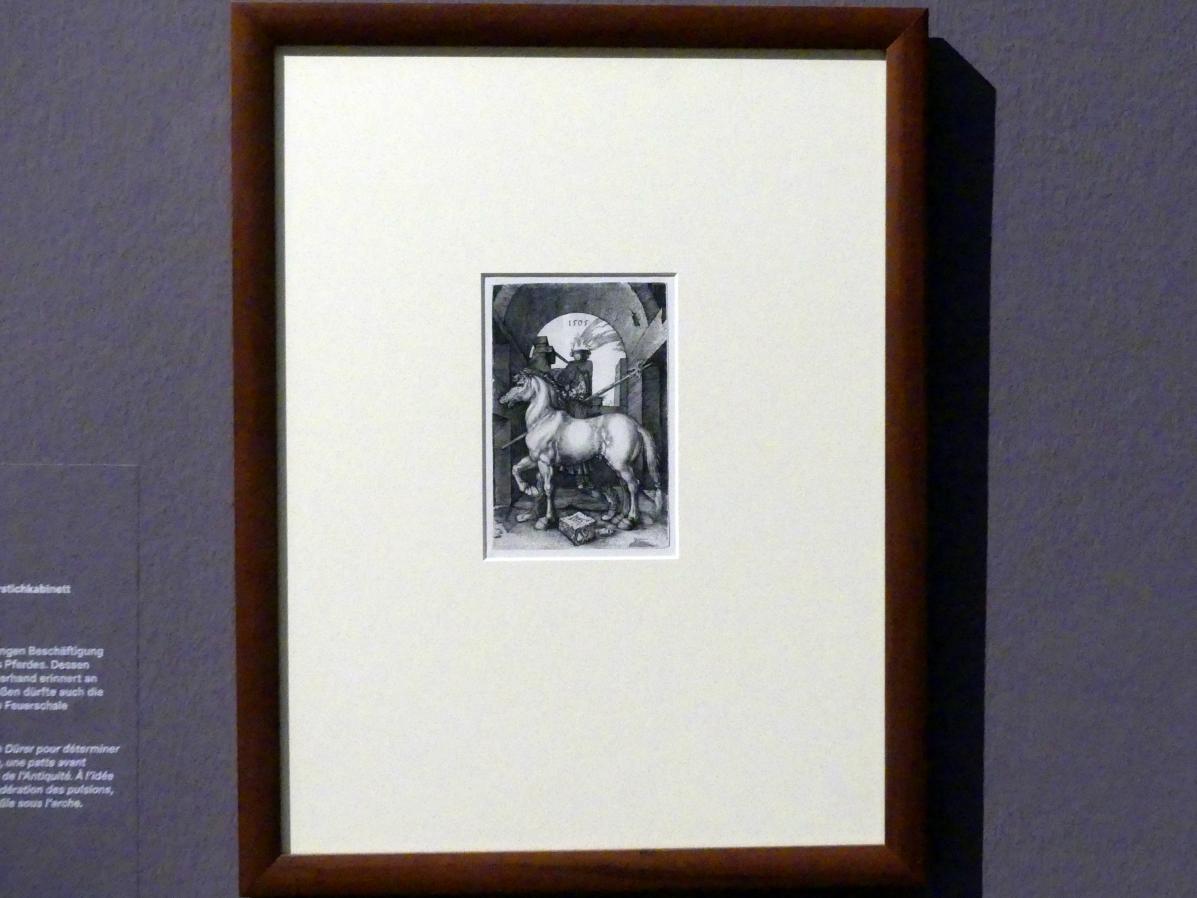
Das kleine Pferd, Albrecht Dürer, 1505
Bartrum, Giulia, et al. Albrecht Dürer and His Legacy: The Graphic Work of a Renaissance Artist. Exhibition catalogue. London: British Museum, 2002. Boorsch, Suzanne, and Nadine M. Orenstein. "The Print in the North: The Age of Albrecht Dürer and Lucas van Leyden." Metropolitan Museum of Art Bulletin 54, no. 4 (Spring 1997), pp. 3-12.

Albrecht Dürer Das Fräulein zu Pferde und der Landsknecht Städtisches
Young Hare - Albrecht Dürer (1502); one of Dürer's most famous works - scholars have pondered how he managed to pose the animal. The reverberating gleam in the hare's right eye.

Dürer Das kleine Pferd Albrecht Dürer Wikimedia Commons Albrecht Dürer, Great Paintings
Self-portrait (1498) by Albrecht Dürer; Albrecht Dürer, Public domain, via Wikimedia Commons. The Four Horsemen of the Apocalypse by Albrecht Dürer In Context. Albrecht Dürer's The Four Horsemen of the Apocalypse was part of - the third - his series of woodcuts illustrating the Biblical prophecies regarding the coming of the Apocalypse. It has been one his famous woodcuts made.

At Auction Albrecht (1471) Dürer, Albrecht Dürer (1471 Nürnberg 1528) Der heilige
Albrecht Dürer (1471-1528 CE) was a German Renaissance artist who is considered one of the greatest painters and engravers in history. A native of Nuremberg, Dürer was famous in his own lifetime at home and abroad for his oil paintings, altarpieces, drawings, and engraved prints, as well as for his numerous treatises on art theory.
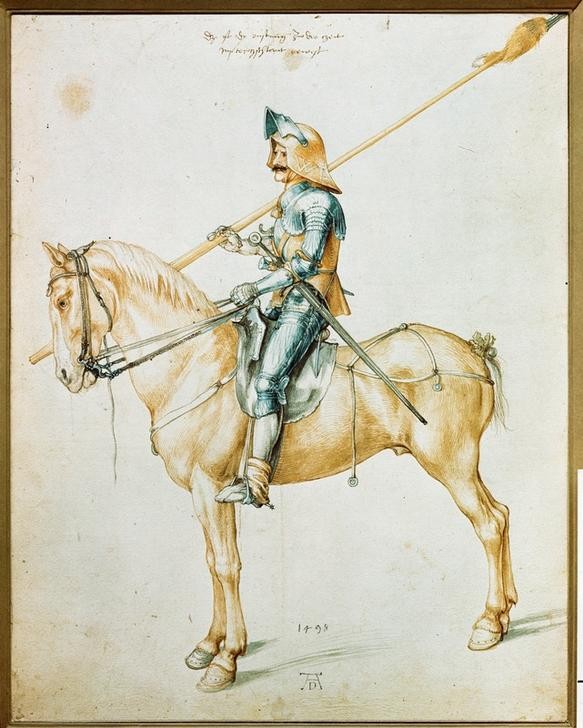
Wandbild Albrecht DÜrer, Reiter art galerie
Regarded as the greatest artist of the German Renaissance, Albrecht Dürer (1471-1528) incorporated Italian Renaissance themes and styles in his work. Perhaps seeing himself as an "artist-prince," Dürer characteristically portrayed himself in self-portraits as one certain of his own brilliance.[1]

Bid Now Albrecht Dürer Das kleine Pferd September 5, 0121 1000 AM CEST
The third and most famous woodcut from Dürer's series of illustrations for The Apocalypse, the Four Horsemen presents a dramatically distilled version of the passage from the Book of Revelation (6:1-8): "And I saw, and behold, a white horse, and its rider had a bow; and a crown was given to him, and he went out conquering and to conquer.
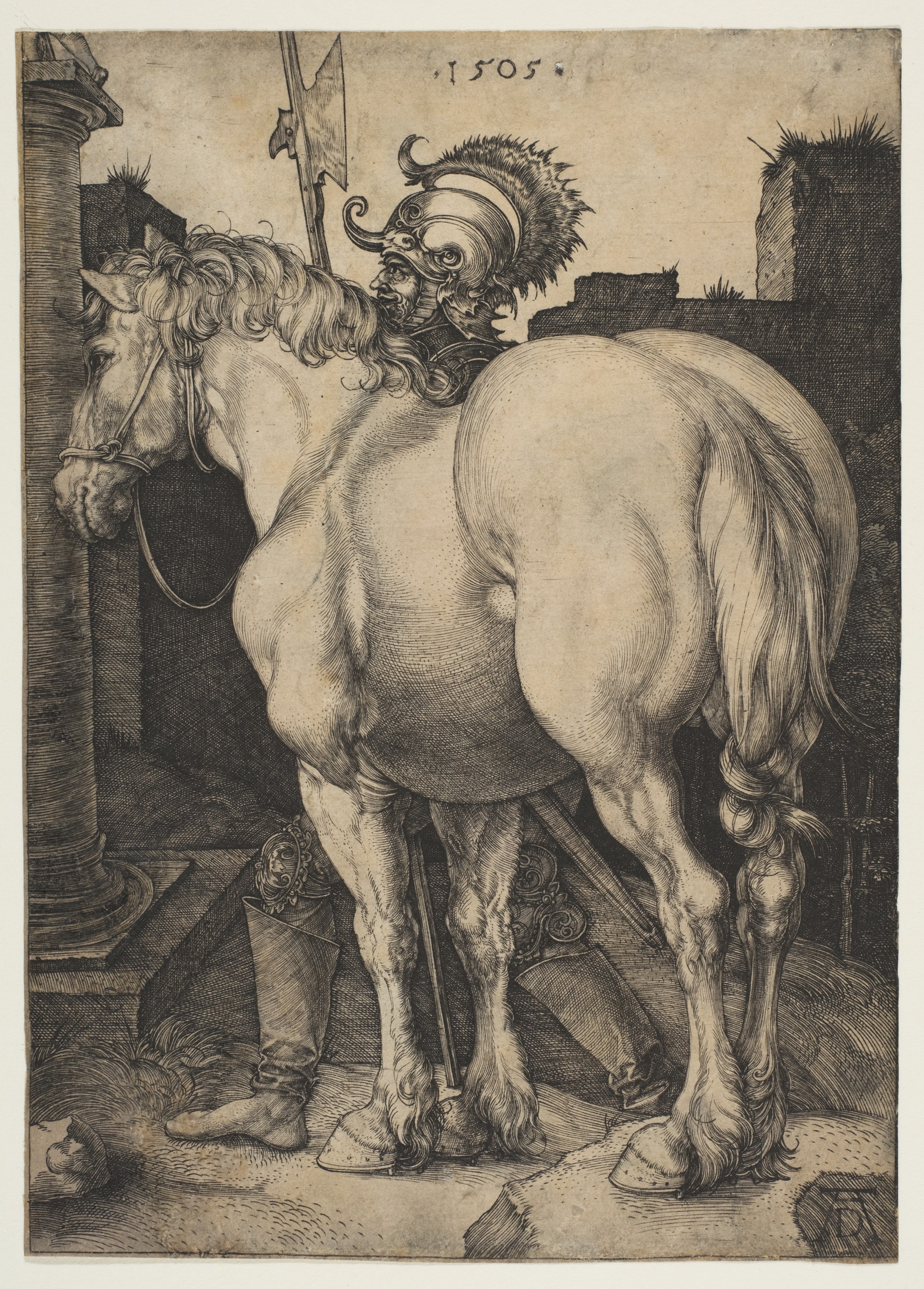
Albrecht Dürer The Great Horse The Metropolitan Museum of Art
It shows Albrecht Dürer the artist, his talents bestowed onto him by God. Set against a plain background, the artist is directly facing the viewer. His right hand is lifted to his chest with two fingers spread apart, reminiscent of a gesture of blessing. His curly hair falls to his shoulders and his monogram is emblazoned prominently to his right.

Albrecht Dürer St. Hubertus Kunstsammlungen Nürnberg Albrecht durer, Albrecht dürer, Saint
Albrecht Dürer (German, Nuremberg 1471-1528 Nuremberg) 1603-4. Di Alberto Durero Pittore, e Geometra. . .della Simmetria dei Corpi Humani, Libri Quattro Nuouamente Tradotti dalla Lingua Latina nella Italiana. Albrecht Dürer (German, Nuremberg 1471-1528 Nuremberg) 1591.

Sold Price Albrecht Dürer Der heilige zu Pferd (Saint on Horseback) November 3
The Nuremberg artist Albrecht Dürer (1471-1528) is often thought of as one of the Renaissance´s greatest self-promoters. He might even be categorized as a "reputational entrepreneur." Dürer was the first artist to depict himself on self-standing portrait panels. These three portraits now hang in some of Europe´s most important.